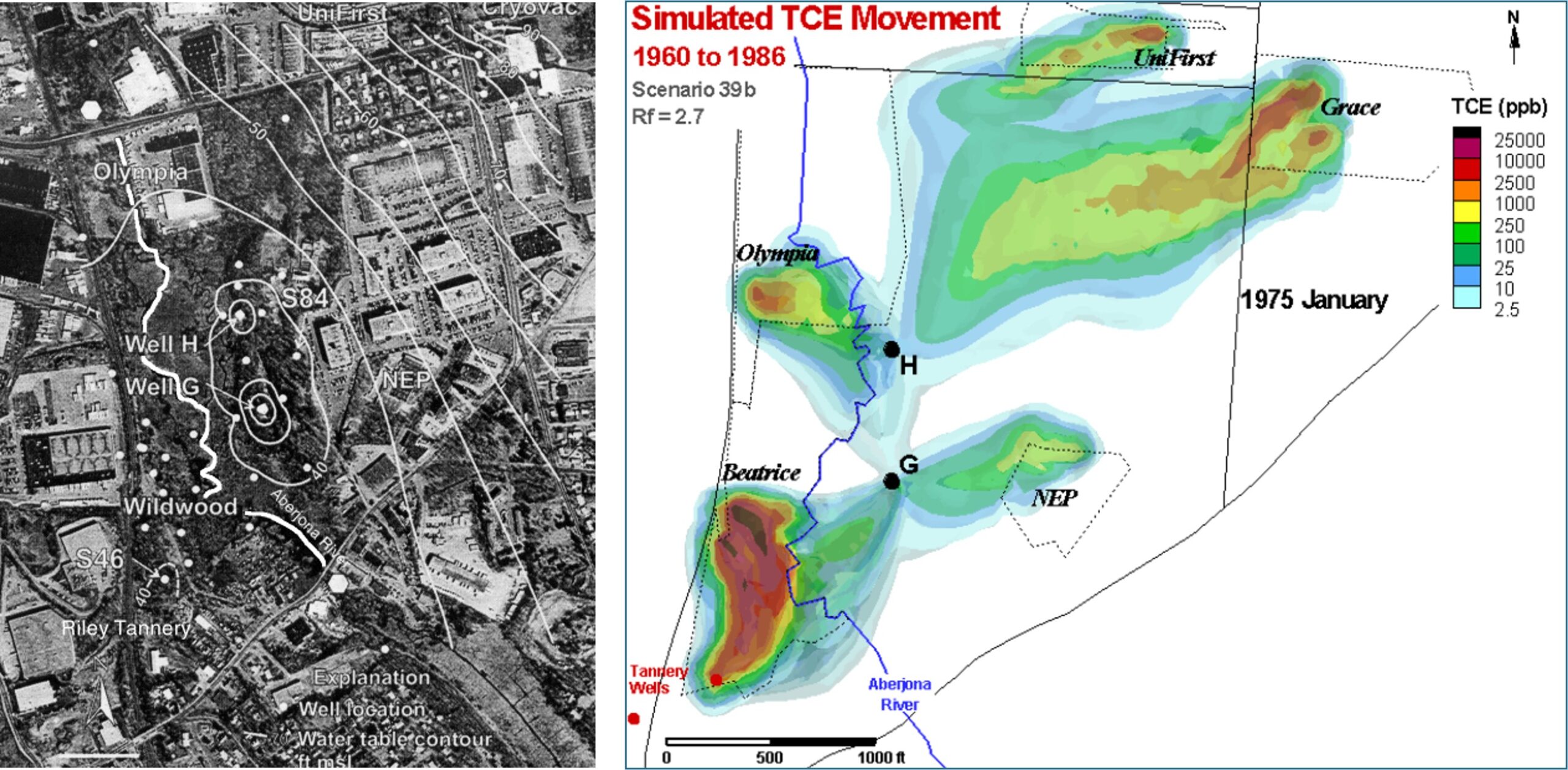The following summary is from the Environmental Hydrogeology course I taught at Montclair State University in 2012. I was not involved in the project/case – it was well before my time.
In the 1960’s, the city of Woburn, MA starting using two wells as part of their water supply (Wells G & H, below). The wells were located in a historically industrial area. Residents whose water came from these wells complained that the water smelled and tasted bad, and that it ruined their cloths. There was also a high incidence of childhood leukemia in the neighborhood served by the wells. As a result, residents suspected the water was the cause for the increased leukemia and that that nearby industries were responsible for contaminating the groundwater.
The Massachusetts Department of Public Health determined the water did, in fact, contain significant concentrations of TCE, PCE, and other chlorinated compounds. Subsequent hydrogeological investigations by the US Geological Survey and environmental consulting firms consisted, in part, of installing monitoring wells throughout the area to measure groundwater levels and therefore determine groundwater flow directions, collecting analytical samples to determine the spatial distribution of contaminants in groundwater, using boring logs to characterize aquifer properties, and performing a pump test to determine the groundwater flow directions that existed when the water wells were operating. The results of these and other investigations indicated that W.R. Grace & Co., owner of the Cryovac Plant northeast of the wells, UniFirst Corporation, owner of Interstate Uniform Services, and Beatrice Foods, Inc., owner of the John Riley Tannery were sources of contamination. Some other sources were also discovered.
A lawsuit was filed by residents in 1982. The plaintiffs alleged that ingestion of the chemicals used at these industries (by way of drinking the contaminated groundwater) were responsible for severe health effects. Children of seven of the plaintiffs contracted leukemia. Five of the children died from leukemia or complications of having leukemia. The spouse of one plaintiff contracted acute myelocytic leukemia and died.
The litigation became the subject of the famous 1996 book “A Civil Action”. A movie of the same title based on the book was released in 1998.
The plume figure shown below is part of an animation that you can watch here:
http://serc.carleton.edu/NAGTWorkshops/hydrogeo/activities/10657.html


